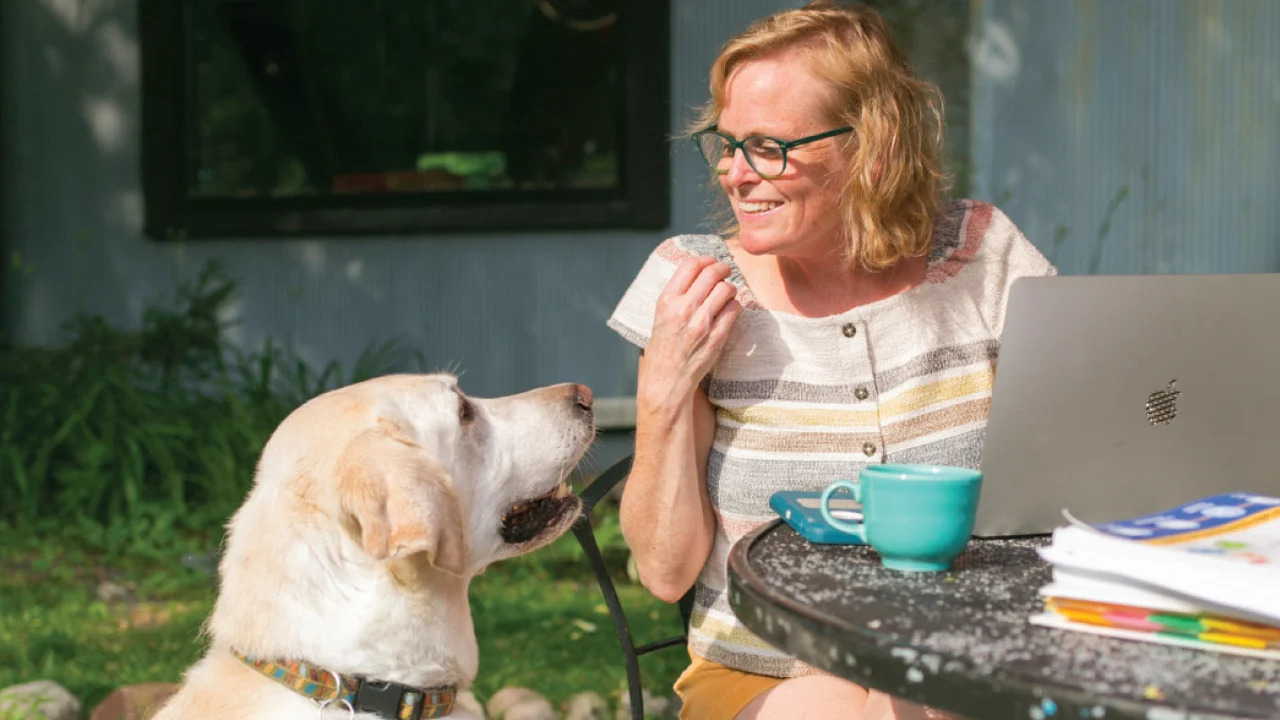
I remember experiencing for the first time what I now, as an adult, understand as grief.
It was the late 1980s. Teenager me was in the throes of adolescence. Hormones raged! The diminutive, dirt-faced tomboy in the mirror became an unknown stranger staring back at me. My childhood was gone—vanished before my very own eyes. The experience was both exhilarating and terrifying. I did what I had to do: I rebelled like hell.
Twelve years passed before I could get the bulimia under control—cognitive behavioral therapy, a supportive spouse, and a child of my own on the way compelled me to overcome the agonizing urge to binge and purge. All these years later, I can trace the eating disorder back to teen me desperately trying to turn back time. Lashing out against the woman I had no choice but to become. I had lost the me that I had always known. I was acting out my grief in self-destructive ways.
Whether it’s the loss of childhood innocence, or the deep and profound loss of a loved one, grief is a complicated beast. But what we often fail to remember is that grief is also universal. It’s one of the most common aspects of our human experience. And yet, we all grieve differently.
It’s so odd that something as common as grief is so often experienced alone. Too many of us grieve in isolation. We fear it, we are ashamed of it, mad at it, sad at it, and sometimes see no end to it. To make matters worse, some people are under the terrible misconception that grief has a timeline. It does not.
There is no deadline for a grieving person to be done with their grieving. To be sure, there is healing, but every person in grief deserves to do it on their own human time clock, not on anyone else’s. There is no “right” way to grieve. And, it’s never really over. It’s just different. Some days it’s awful. Other days it can actually be beautiful.
In this column I hope to explore the experience and the meaning of grief in all of its shapes and sizes: in the loss of a spouse, a parent, a best friend, a child. In the loss of a job, a home, a marriage. Even in the loss of a childhood through the most natural of acts: growing up. I’ll share my own experiences, as well as those of others who allow me the honor and privilege of speaking with them. I’ll also talk to grief professionals in the hopes that they’ll offer advice, empathy, and wisdom.
While I was able to leave the bulimia behind in the decade of my 20s, I am and will forever be in recovery. Some days I feel I’ve healed; other days not so much. It’s certainly better now, but it’s not over. My daughter, my beautiful and wise old soul, calls what I, and so many of us, suffer from “disordered eating.” We restrict our meal portions, we eat too much, we binge, we diet, we generally waste too much time worrying about what we look like in the mirror. Blame the media. Blame the patriarchy. Blame each other. Blame ourselves. Blame the human condition.
Desperate not to pass the mental and physical anguish of disordered eating down to my own child, it was at some point in her early years that I started referring to her body as her “earth suit.” I don’t know how the idea came to me. Maybe I read it, or heard someone say it. In any case, what I meant for her to understand is that your body doesn’t define you. Head and shoulders, knees and toes, they belong to you while you are here on earth. I encouraged her to treat her body with kindness and respect. Appreciate it. Be grateful for it. Tattoo it!
To journey through life is to journey through loss. Losing my childhood earth suit would be followed by a multitude of losses great and small. Many more will follow. Thankfully, with age and time, I am learning not to suffer those losses alone. With the help of my support system, I am trying to accept my grief, to attend to it. And, if I can, even come to see the good in it.
I wish the same for you.



